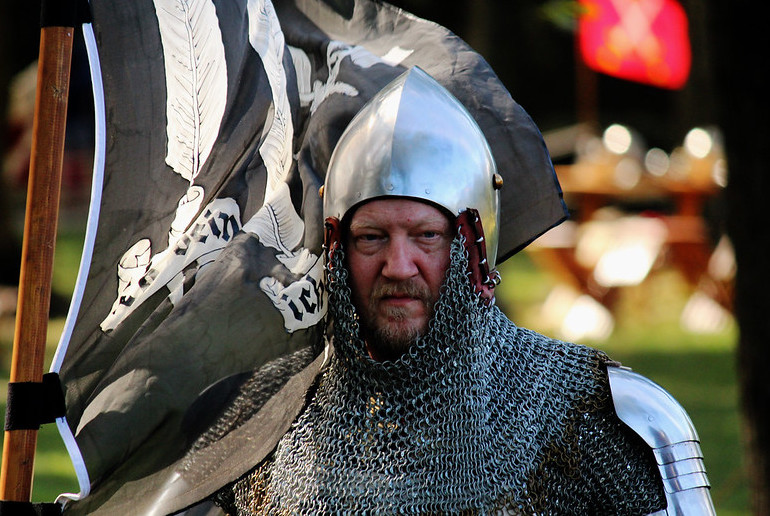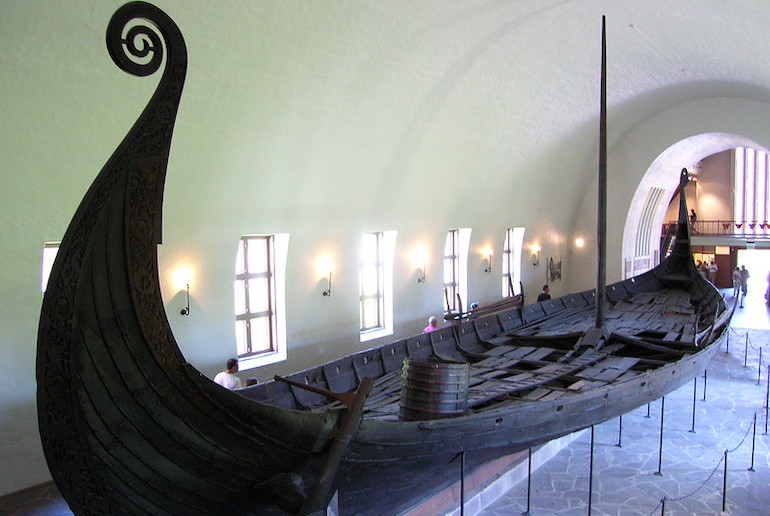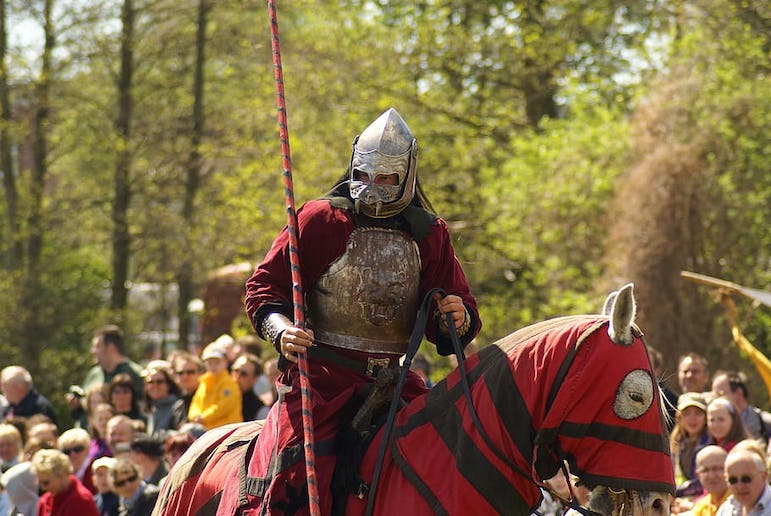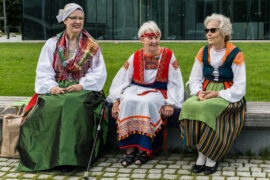When you think about Vikings, it’s likely that an image of a pale, blonde-haired warrior wielding a battle axe comes to mind.

However, this picture may not tell the entire story of Viking history. Recent research suggests Vikings may have been a more diverse group of people than most scholars first believed.
‘More diverse’ is one thing. But could there really have been black Vikings? Almost certainly not.
But with Hollywood becoming more inclusive in its casting and storytelling, people have started to wonder. So let’s jump in and see what the truth is.
Understanding the Viking lifestyle
Let’s get one thing straight. Being a Viking wasn’t solely determined by your genetic background. Instead, it was a way of life.
Viking culture often involved exploration, trade and conquest, and it’s possible that people from various backgrounds and ethnicities adopted (or at least put up with) the Viking way of life.

A quick aside: the word for “Viking” is derived from Old Norse. The word “Vik” means creek, inlet or bay. The suffix “-ing” was added, resulting in the word that we are all familiar with today. This suggests that a Viking was someone who originated from the sea. In some cases, something similar to a pirate.
While the Viking reputation is often associated with raids and warfare, the reality is that many Vikings were part-time warriors who also engaged in farming and family life.
In fact, the majority of Viking society was made up of farmers and traders who lived relatively peaceful lives.

Historical encounters between Vikings and Africans
In the 9th century, the Vikings started to explore further afield, seeking wealth and colonization in far-off lands.
According to the book Vikings in the South by Ann Christys, Vikings launched raids on the Christian north and Muslim south of the Iberian Peninsula and later targeted North Africa and beyond.
Historical texts mention that there was a possible raid on Nekor in present-day Morocco by a Viking fleet led by Hastein and Björn Ironside. The city was captured and its inhabitants were either taken as slaves or fled.
Archaeologists have yet to find physical evidence to support the Viking raid on Nekor, but skeletal remains of rodents on Madeira (around 300 nautical miles off the coast of Africa) suggest that the mice may have been transported on a Viking vessel and colonised the island between AD 903–1036.
Who knew rats could be useful for understanding historical human migrations?
Another interesting idea to consider is whether or not the Vikings intermingled with people from Africa. And although there is no concrete evidence of mixing between Vikings and Africans, it’s not impossible.
While there are written accounts of Vikings raiding and trading along the African coastline, these accounts do not necessarily indicate that there were significant interactions between the Viking and African populations.
The origins of Black Vikings – theories and evidence
There is one (largely unsubstantiated) theory that people from Africa may have arrived in Scandinavia, either voluntarily or through slavery.
While evidence of these interactions is scarce, some historians and archaeologists point to artefacts such as African coins and skeletal remains with possible African origins as potential indicators of the historical presence of Africans in Scandinavia and other countries where Vikings would have been present, such as England.
According to one theory, it is possible that some Africans were present in Scandinavia as part of the origins of the Scandinavian people who came from the Nile Valley region.
This theory suggests that the group included both taller Bantu Africans and shorter Twa Africans.
Moreover, a recent genetic study published in Nature analyzed the genomes of 442 Viking Age individuals from various regions in Scandinavia and found evidence of significant genetic diversity among the Viking population.
The study found that Vikings had a complex mixture of European ancestry, with some individuals showing ancestry from southern and eastern Europe.
However, the study did not focus on the genetic diversity of Vikings based on skin colour or physical appearance, as genetic markers for these traits are more complex and not yet fully understood.

The depiction of Black Vikings in art and literature
Certain pieces of art and literature from Scandinavia depict Vikings and Danes from the 8th century as having black features.
Carvings have been discovered on ships in Norway, including one that is said to depict Nordic seafarers who may appear to have African ancestry.
In his book A History of the Vikings, Gwyn Jones writes (p.216) that in Spain “Vikings spent an unharassed week rounding up prisoners for ransom, though some, probably [black], they kept as souvenirs of the voyage. These poor wretches, fir grom, blue men, blame, black men (or merely men with dark skins), for the most part ended up in Ireland”.
Despite the existence of artefacts and artwork that suggest the presence of Black people in Viking society, there is a lack of written accounts detailing any tensions or conflicts between Scandinavians of different skin colours.
It’s possible that such tensions existed but were not recorded or have been lost to history. Or, maybe there wasn’t any conflict around skin colour because Scandinavia was overwhelmingly (if not entirely) white.
So, were there black Vikings?
While there is evidence to suggest that Vikings may have been more diverse than previously believed, including the possibility of Viking presence in Africa, the evidence for the existence of black Vikings is still extremely limited.
We can therefore say that no, it is not likely that there were black Vikings.
However, as we continue to learn more about Viking history, it is important to recognise the complexity and diversity of this fascinating culture and to approach the idea of diversity with sensitivity and respect. Things were probably more diverse than our stereotypes about Vikings permit us to believe. But black Vikings might be a bridge too far.
Sources
Here are some more useful and interesting sources so you can explore the topic further on their own and continue learning about the rich and diverse history of the Vikings!
Vikings as pirates
Viking DNA
The black Vikings
History of the Vikings
See also:
Viking name generator
Viking runes
Famous Vikings you should know about
Did Vikings really have dreadlocks?










This article is a load of absolute rubbish, airing nonsensical theories such as that the Scandinavian peoples originated in Africa. The historical fact is that there is no evidence of Scandinavians of the Viking Age ever reaching West Africa and coming in contact with the people there, the people who typically have a dark brown to black skin colour. To be sure Vikings did reach the shores of North Africa and did take slaves from there, but the native people of that region, the peoples of Tunisia and the coastal regions of Algeria and Morocco are not in any way… Read more »
Geirmund Heljarskinn becomes the “Black Viking” – the most powerful settler on Iceland through times. Dark-skinned